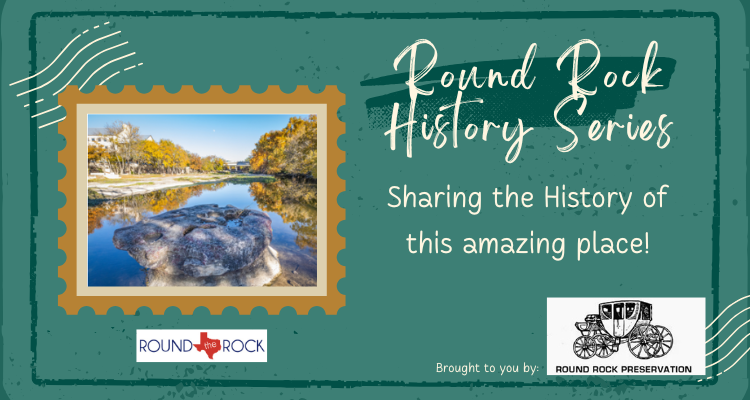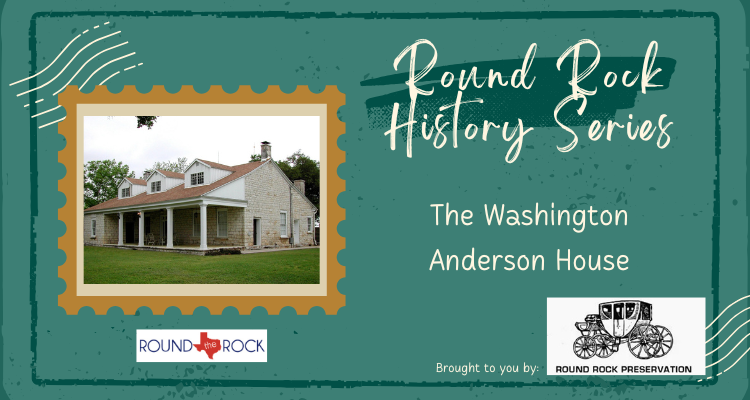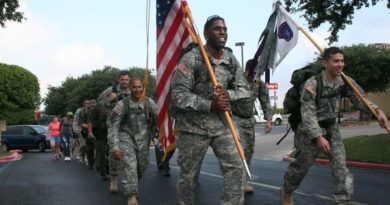Round Rock History: Washington Anderson House
Washington Anderson House, a.k.a. “El Milagro,” a.k.a. Heritage House
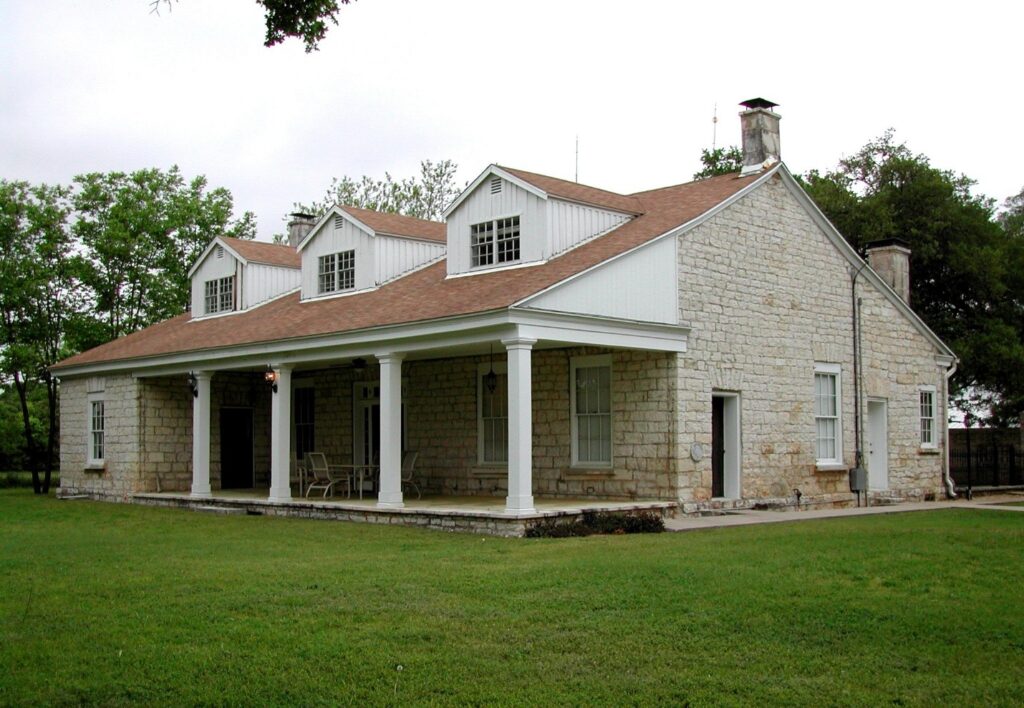
Have you seen this pristine property, situated on the north side of Brushy Creek in Round Rock, at 901 Heritage Center Circle? This grand old home, surrounded by stately live oaks, was built by Washington Anderson between 1855-1859.
Today, it is owned by the City of Round Rock and has been renamed Heritage House. It currently houses the Round Rock Chamber of Commerce, while the Griffith Building (the former Round Rock Library) is being renovated for its new offices downtown.
Washington (Wash) Anderson was a veteran of the Battle of San Jacinto, April 21, 1836. Wash’s brother and father also served in this war, and for their service, all three men and other veterans received land grants from the Republic of Texas known as headrights. This war secured Texas’s independence from Mexico. In 1841, Washington Anderson was awarded a 1,107-acre headright to the west of Round Rock, which later became part of Williamson County. The land upon which this grand house sits was Wiley Harris’ headright. Wash Anderson’s father inherited it and later gave it to Wash in 1843. Both tracts of land are shown on the map below.
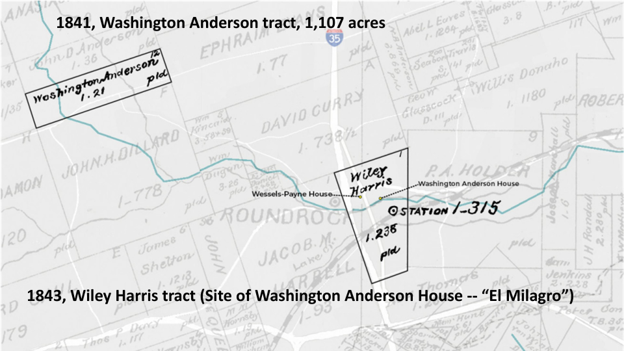
Washington Anderson (1817-1894) was one of Round Rock’s most influential and well-known early settlers. He was born in Pittsylvania County, Virginia. In February of 1835, his father, Dr. Thomas Anderson, brought Wash and his brother (John) to Port Lavaca, Texas. A month later, the family received a land grant from the Mexican government of 4,428 acres in Travis County.
Wash was instrumental in forming Williamson County, which was originally part of the Milam District. In 1848, Wash and James O. Rice, another noted early Williamson County resident, circulated petitions for signatures of settlers who favored forming a county in this area. On August 7, 1848, Williamson County was officially carved out of the Milam District.
In the early days, Round Rock had no water service, and citizens would buy water from water wagons filled from “Anderson’s Springs.” Wash is credited with building the first sawmill and gristmill, which, unfortunately, were washed away in a flood in 1845, which also destroyed the log cabin he had built for his family. By 1850, he owned almost 4,700 acres of land in this area. He, his wife Mary Ann, and daughter Chloe lived in log cabins before moving to the stone house he built between 1855 and 1859.
He was able to sell portions of his land to improve the lives of area residents. In 1868, he sold three acres of his land for $23.00 to the Greenwood Masonic Institute for the first secondary school in the area. The location of that school was close in proximity to where Gatti-town stands today (corner of Sam Bass Rd and IH-35).
The International and Great Northern (I&GN) Railroad purchased 150 acres from Washington Anderson for $3,000 in 1876. The I&GN retained ownership of approximately 25 acres of this land for the railroad right of way. The rest was sold to Texas Land Company, and it was subdivided and became New Town Round Rock (our current historic downtown area). With the arrival of the railroad, Round Rock became an important town in the region for commerce, hotels, and travelers.
Following World War II, several veterans (known as the Army Colony) moved to the Round Rock area and began revitalizing Old Town and renovating the historic homes throughout Round Rock. Col. and Mrs. Ross Irwin bought the Washington Anderson home and remodeled it from 1949-1951. The second story was added at that time by lowering the ceiling, and the dormer windows were added. They named the home “El Milagro.” Daughter, Harriet Rutland, later owned the property and added the courtyard and wall on the north side of the building.
The 17-inch thick limestone walls have withstood the test of time, and the grandeur of Washington Anderson’s home has remained undiminished with its cedar and cypress woodwork, “cornices, trim, and the neat capitals of the box columns of the porch.” It is truly “A Miracle” and a testament to the value of preserving the past for future generations to use and enjoy.
Authored by: Judy Anderson, President, Round Rock Preservation
Contributor: Kerstin Harding, Planner, Planning & Development Services Dept, CORR
References:
- Karen Thompson and Jane DiGesualdo; Historical Round Rock, Texas, 1985
- Library of Congress, Historic American Buildings Survey/Historic American Engineering Record/Historic American Landscapes Survey
- City of Round Rock Planning and Development Services Department
Copy and images provided by Round Rock Preservation
This Round the Rock series is brought to you by Round Rock Preservation, an IRS 501c3 Nonprofit Charity established for charitable & educational purposes. (EIN: 81-2339800). Donations welcome!
The mission of Round Rock Preservation is to fulfill the need for a city-wide community advocacy program related to protecting, preserving, and supporting historic preservation within the City of Round Rock. Lectures and presentations are available.
For more info, contact Frank Darr, Vice President, at fdarr@austin.rr.com.
Click below to learn more about the history of our fantastic community!
